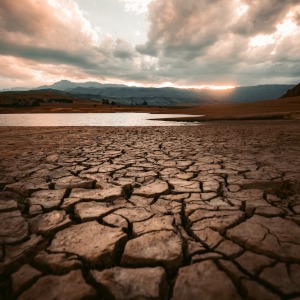Drought is wreaking havoc on North Africa’s water supply and on its agriculture. All countries in the region are facing a dangerous water outlook. For example, cash-strapped Tunisia is expected to import almost all its cereal needs. During his visit to Tunis at the end of December and taking advantage of a weakened country, Russia’s top diplomat Sergei Lavrov said his country was “ready” to supply more grain to the Maghrebi nation. Grains have always been a product used by superpowers to influence countries that are facing difficult times, and such weaponization of food will continue to amplify going forward.
For Morocco, the US Department of Agriculture (USDA) calculates that imports of soft wheat should reach seven million tons this year compared to an average of four million tons in previous years. That’s a huge jump and a problem for a country where agriculture is the top contributor to employment and GDP.
Already, the drought there has caused the loss of nearly 300,000 farm jobs during the third quarter of 2023. This does not feel good considering agriculture employs 40% of the active population and represents 14% of the country’s GDP.
Combined with demographics, the drought is quickly changing the water consumption profile of Moroccans. In 1960, per-capita availability of water was 2,600 cubic meters per person per year. Today, that figure dropped to a stunning 600 cubic meters, a 77% reduction.
For its part, Algeria is spending hundreds of millions of dollars to feed its population through the import of wheat it cannot produce domestically anymore. The improvement of its finances thanks to gas exports masks a worrying reality about the country’s water and food production deficits. Reuters said the country already purchased between 550,000 and 580,000 tons of wheat in November 2023 and it will continue to buy more wheat to avoid unrest as the president prepares to run for a second term this year. This latest purchase comes after those taking place at the start of 2023, with the import of 1.5 million tons, followed by between 500,000 and 600,000 tons in May, 400,000 tons in June and up to 800,000 tons in August. Algeria is bleeding money because of its appetite for bread and couscous.
Water dams in northern Algeria, where there is a large concentration of farming activity, are almost entirely dry. Authorities say there is a 90% deficit in northern dams. As such, almost 100,000 farmers located in the northern provinces have been hit hard by this situation. In all, 14% of agricultural land, or 1.2 million hectares, is affected by water shortages. This also has had the ripple effect of reducing the sheep stock by more than 20% to a little over 17 million heads.
All of these issues are largely caused by what is now an endemic drought facilitated by global warming and governments’ inability to find suitable solutions to this problem. Could technology help? Perhaps. Governments in the region are looking for seawater desalination as the potential solution, but this is going to cost the region billions of dollars to procure the technology and deploy it. As the climate crisis continues to push temperatures soaring, seawater desalination may be the long term solution, but at a high price. And perhaps reducing military spending may be the first step to the right direction?



